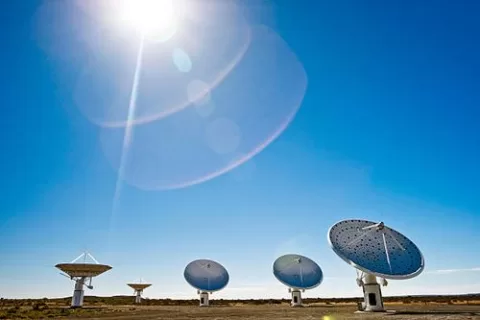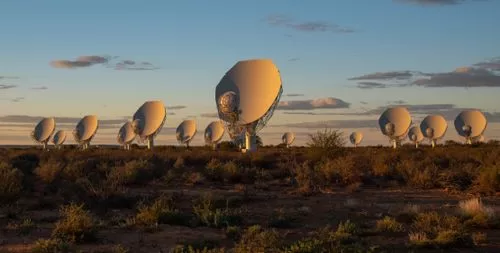MeerKAT telescope is a recent, cutting-edge radio astronomy project situated in the expansive Karoo area of South Africa and which has placed the nation on the map of space observation missions. This yields an impressive array of 64 individual dish antennas each 13.5 meters across, it is very sensitive and provides excellent imaging, allowing astronomers to look far out into space to unravel the secrets of large scale structures and events.
MeerKAT forms part of the Square Kilometre Array (SKA) project that is an international project aimed at building the largest radio telescope in the world. Once completed, the SKA will include up to several thousand antennas in Africa and Australia connected to producing a single telescope with a collecting area on the order of one square kilometer. The above sections have demonstrated that as precursor of the SKA, MeerKAT has achieved remarkable successful contributions in astronomy.

Read also Square Kilometre Array the World’s Largest Telescope project update
Completion date
Since its commissioning in 2018, MeerKAT has offered many novel contributions to astrophysical research; it has produced some of the sharpest images of the Milky Way galaxy. Among its ongoing discoveries are the discovery of the giant radio galaxies which are structures that are millions of light year across and powered by supermassive black holes.
Some of the special findings made through the telescope include an identification of an OH megamaser, a cosmic amplifier which draws power from radiation from galactic cores. In many instances, this finding allows astronomers to peer into the heart of galaxies that are billions of light-years away and to learn how they have changed over time. Also MeerKAT has determined the neutral hydrogen distribution in nearby galaxies, which is fundamental for studying galaxy formation as well as the evolution of galaxies.
The MeerKAT remains on the one hand a success story of the advancement in the field of astronomy but on the other end a success story of technological evolution and human resource management in South Africa. By funding this project, the centre has raised the human capacity of science in South Africa and created a chance for several scientists at the country who might otherwise have to work overseas for employment. In addition, the communities around the scope of the telescope have benefitted through education, leardership and technology.
MeerKAT situated in the Karoo desert of South Africa provides the best environment for radio astronomy due to the lack of interference from local man made interference. This makes sure that it will be perceiving the even the lowest frequency radiation from outer space.
Significance
MeerKAT will also remain a key instrument for investigating the universe as a part of the even more extensive SKA facility. Its data is disseminated to cold partners across the globe, and it is already revolutionizing our knowledge of the cosmos. However, with new upgrades and the future merging into the total SKA array, MeerKAT will remain a leading iconic station for modern astronomical study over the next few years.
Thus, MeerKAT is not only a view to the stars but also the evidence of South Africa’s rising importance as the scientific and innovative power.
Project factsheet
Architect: south African radio astronomy observation.
Start date: 2009.
Completion date: 2018.
Construction cost: $250 million .
Location: northern cape province.
Read also World’s Largest Radio Telescope: An Innovative Project in Australia

Leave a Reply